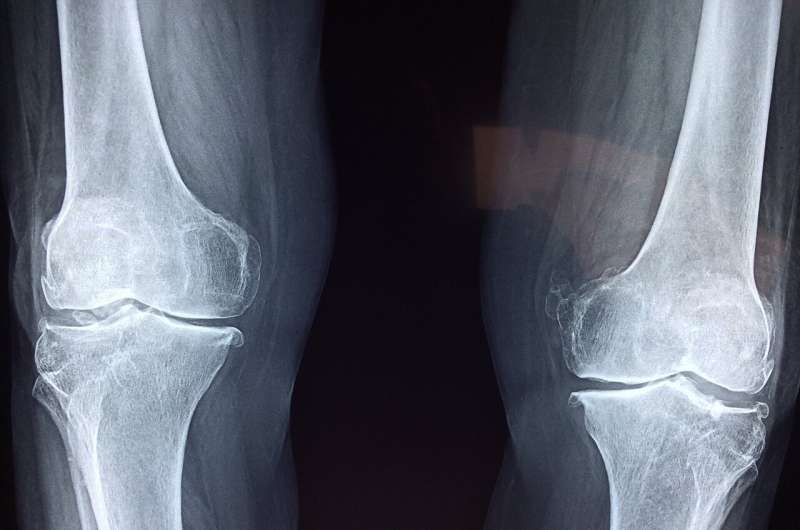New strategies for engineering stable articular cartilage

A new study assesses the effect of the gremlin-1 (GREM1) protein on the in vitro and in vivo stability of bone marrow stem cell (BMSC)-derived cartilage engineered within scaffolds. The study design and results are reported in the peer-reviewed journal Tissue Engineering, Part A.
A major challenge associated with MSC-derived cartilage is that the cells tend to undergo hypertrophic differentiation, yielding tissue unsuitable for use in articular cartilage repair. New tissue engineering strategies are needed to generate stable chondrocyte-like cells from BMSCs. In this study, Daniel Kelly, from Trinity College, and co-authors treated BMSCs seeded onto scaffolds with GREM1, which is a glycoprotein that inhibits bone morphogenetic proteins (BMPs). BMPS are capable of inducing endochondral bone formation. The investigators found that GREM1 suppressed the expression of known hypertrophic markers and slowed the turnover of engineered cartilage tissue in vivo. However, it did not prevent endochondral ossification from occurring in vivo.
"The results of this study demonstrate that cartilage constructs engineered in the presence of GREM1 are more resistant to matrix degradation and turnover upon subcutaneous implantation, although stimulation with such BMP antagonist in vitro does not prevent regions of the tissue undergoing endochondral ossification in vivo," concluded the investigators.
"Dr. Kelly and colleagues at Trinity College Dublin (Ireland) nicely show that a key regulator of articular cartilage physiology (GREM1) can be utilized to suppress cartilage hypertrophy/endochondral ossification, while supporting healthy markers within engineered tissues. Although this approach does not completely eliminate degeneration, the work here establishes an exciting potential pathway for engineering truly viable cartilage tissues," says Tissue Engineering Co-Editor-in-Chief John P. Fisher, Ph.D., Fischell Family Distinguished Professor & Department Chair, and Director of the NIH Center for Engineering Complex Tissues at the University of Maryland.
More information: Pedro J Diaz-Payno et al, GREM1 suppresses hypertrophy of engineered cartilage in vitro but not bone formation in vivo, Tissue Engineering Part A (2022). DOI: 10.1089/ten.TEA.2021.0176




















